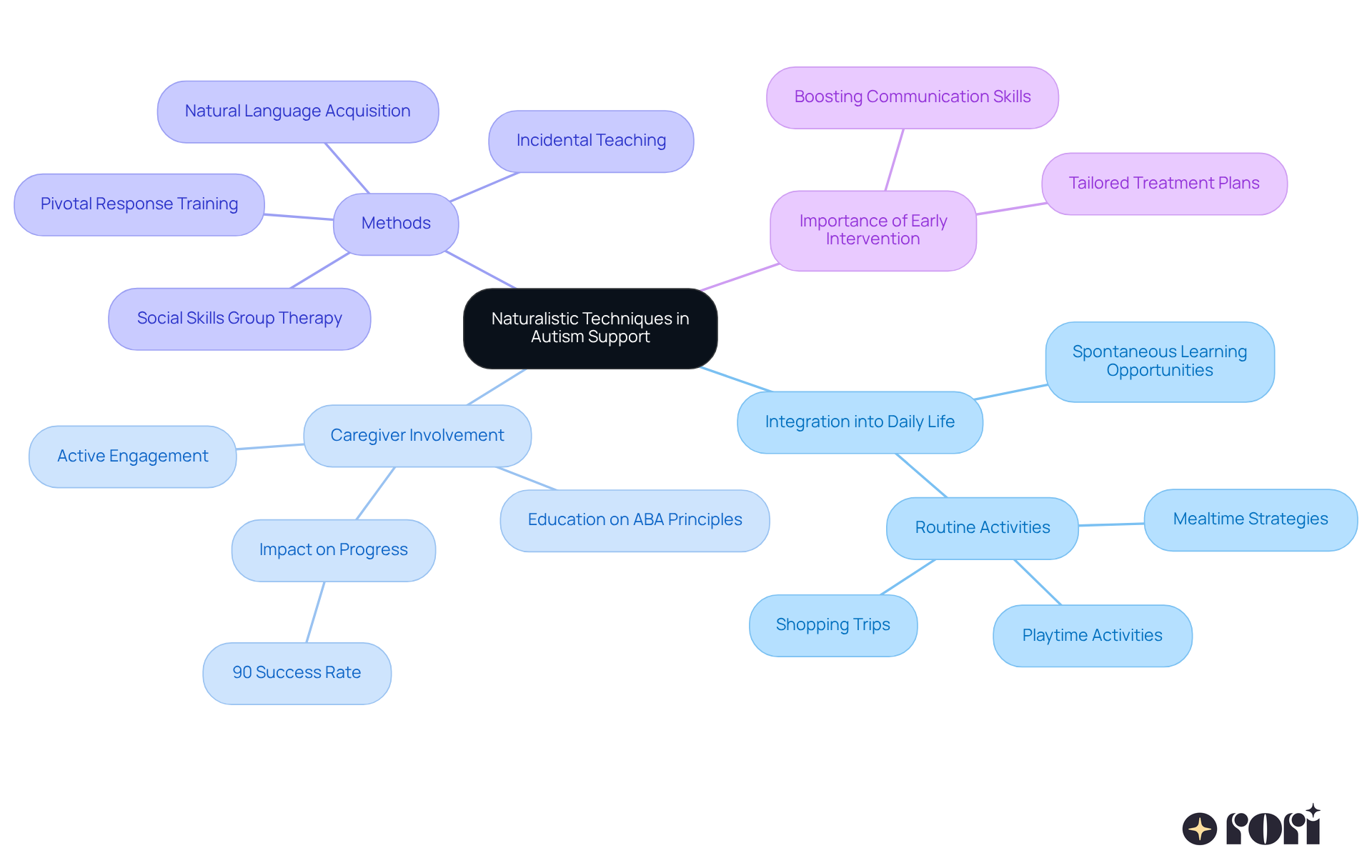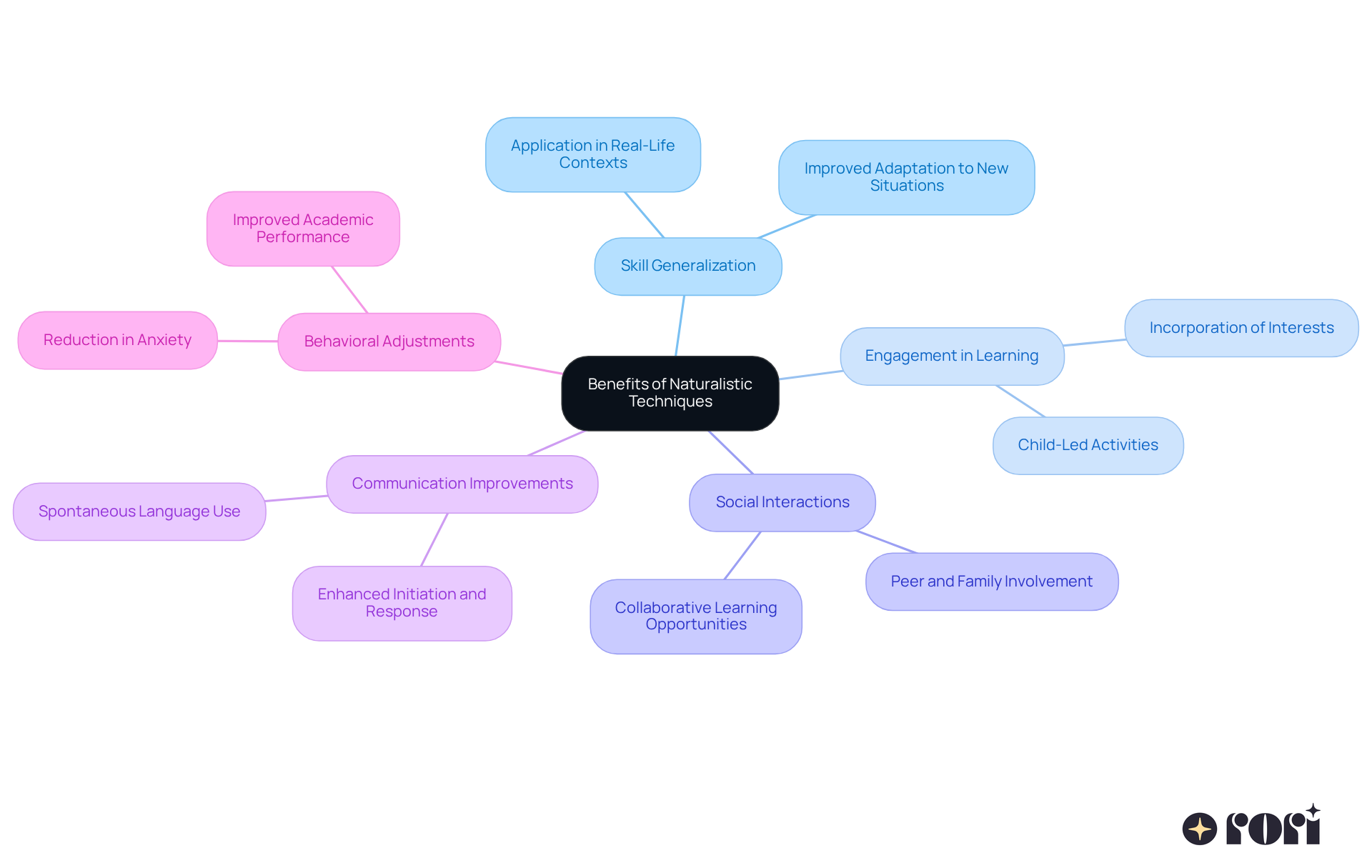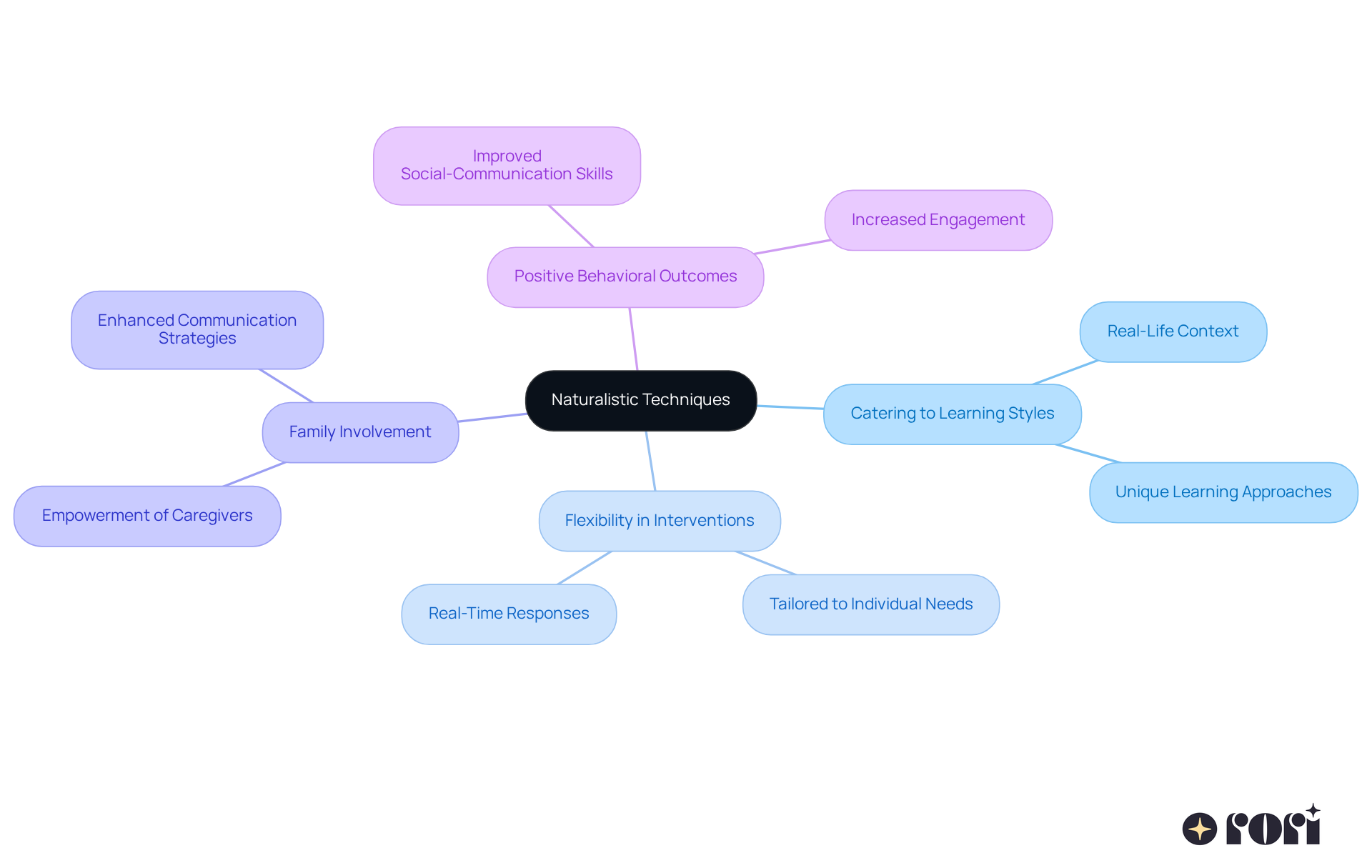Naturalistic techniques can be a wonderful way to support learners with autism! By weaving learning into everyday activities, we can boost engagement and make things feel more relevant for the child. It’s fascinating how these techniques:
Let’s explore this together and see how these strategies can make a difference!
Naturalistic techniques have emerged as a transformative approach in supporting learners with autism, seamlessly weaving educational interventions into the fabric of daily life. By tapping into spontaneous moments during everyday activities, these methods not only promote skill acquisition but also boost engagement and retention in ways that traditional therapy often can't match.
But let’s pause for a moment and think: how do these techniques truly cater to the unique learning styles of individuals on the spectrum? And what challenges do caregivers face in effectively implementing them? These are important questions that many parents grapple with, and we're here to explore this together!
Naturalistic techniques are used to help learners by integrating interventions into a young person's everyday life. This means promoting learning through those spontaneous moments during daily activities where naturalistic techniques are used to help learners. Unlike traditional therapy sessions, naturalistic techniques are used to help learners by taking advantage of natural opportunities for teaching and reinforcement. For instance, playtime can be a great way to boost social skills, and communication strategies can easily fit into routines like mealtime or shopping trips.
This approach is grounded in Applied Behavior Analysis (ABA), which highlights how important context and relevance are for children on the autism spectrum. Active involvement from caregivers is key! Research shows that 90% of individuals make significant progress when caregivers are engaged and follow through with recommended hours. Educating caregivers is crucial, too, as it equips them with ABA principles and effective strategies for behavioral support.
Methods like Incidental Teaching and Natural Language Acquisition play a vital role in naturalistic instruction. They help therapists seize those naturally occurring moments to encourage learning. Plus, social skills group therapy, led by qualified therapists, can enhance social interactions and communication within a group, fostering better relationships.
Naturalistic techniques are used to help learners, enabling therapists to create a more engaging and meaningful learning experience that truly connects with a young person's daily life. This approach can lead to remarkable improvements in communication and social skills! As Landa et al. note, early interventions are crucial for boosting communication skills in individuals with developmental disorders. And remember, treatment plans can be adjusted based on progress reports, ensuring that the approach stays tailored to each individual's changing needs. Let’s explore this together!

Naturalistic techniques offer so many benefits for learners with autism! They help young individuals generalize their skills, allowing them to learn in the same places where they'll use those abilities. This really boosts retention and helps them transfer their understanding to different situations. Plus, these methods make learning more engaging and fun, as kids are more likely to participate in activities that spark their interests.
By including peers and family members, naturalistic approaches promote social interactions, creating wonderful opportunities for collaborative learning. Studies show that kids who take part in naturalistic interventions see significant improvements in communication, social skills, and overall behavior. For instance, children involved in Natural Environment Teaching (NET) often experience less anxiety and adjust better to school, leading to improved academic performance and social integration.
This evidence highlights how crucial it is to include naturalistic techniques to help learners in autism support, making them a vital part of effective therapy. At Rori Care, we’re dedicated to equipping caregivers with the knowledge and skills they need to support their little ones’ behavioral goals. We emphasize ABA principles, active involvement, and the importance of data collection, creating a consistent and nurturing environment that maximizes the impact of interventions.
Ongoing assessment and adjustments to behavioral plans, guided by the insights caregivers gather, are essential to ensure strategies remain effective and responsive to each individual’s changing needs. Let’s explore this together—we’re here to help you every step of the way!

Naturalistic techniques are used to help learners with developmental disorders and are built on solid theoretical frameworks and practical applications. One of the main reasons naturalistic techniques are used to help learners is that they cater to the unique ways kids with autism learn best—often in environments that resemble real-life situations. This approach aligns beautifully with developmental theories that stress the importance of context in education, where naturalistic techniques are used to help learners enhance the meaningfulness of their learning experience.
What’s great about the fact that naturalistic techniques are used to help learners is their flexibility. Therapists utilize naturalistic techniques to help learners by tailoring interventions to fit each child’s interests and immediate needs, responding in real-time. This not only enriches the educational process but also fosters a trusting relationship between the child and the therapist, where naturalistic techniques are used to help learners, which is crucial for effective engagement.
Involving family members in this learning journey ensures that naturalistic techniques are used to help learners take these techniques to another level. When parents and caregivers understand that naturalistic techniques are used to help learners, they can actively participate in their child’s development. This empowers them to make informed decisions that positively influence behavioral outcomes. It’s a comprehensive approach that incorporates naturalistic techniques used to help learners achieve better support, independence, and lasting success for young individuals with developmental disorders. Plus, research shows that this collaboration enhances communication and interaction strategies among caregivers, highlighting the power of working together. After all, creating an environment where children with autism can thrive and develop essential skills for their future is what we’re all about! Let’s explore this together!

Naturalistic techniques truly play a vital role in supporting learners with autism, seamlessly weaving educational interventions into their everyday lives. This approach not only makes learning more relevant but also creates a natural and engaging environment where children can really thrive. By focusing on real-life situations and those spontaneous moments, these methods open up meaningful opportunities for skill acquisition and social interaction.
The benefits of naturalistic techniques are numerous! They help promote the generalization of skills, enhance retention, and make learning enjoyable for children. Involving peers and family members enriches those social interactions, leading to significant improvements in communication and behavior. Plus, the flexibility of these techniques allows therapists to tailor interventions to each child’s unique interests and needs, ensuring a personalized learning experience that fits right into their daily routines.
Ultimately, embracing naturalistic techniques in autism support is essential for fostering independence and long-term success in young individuals. By empowering caregivers with the knowledge and tools to actively participate in their children's development, we cultivate a collaborative and nurturing environment. This holistic approach maximizes the effectiveness of interventions while reinforcing the importance of community in the learning journey. Together, our commitment to utilizing naturalistic techniques is a vital step toward creating a brighter future for learners with autism. Let’s explore this journey together!
What are naturalistic techniques in autism support?
Naturalistic techniques are interventions integrated into a young person's everyday life, promoting learning through spontaneous moments during daily activities, rather than traditional therapy sessions.
How do naturalistic techniques benefit learners?
They take advantage of natural opportunities for teaching and reinforcement, helping to boost social skills and communication strategies in contexts like playtime, mealtime, or shopping trips.
What is the foundation of naturalistic techniques?
These techniques are grounded in Applied Behavior Analysis (ABA), which emphasizes the importance of context and relevance for children on the autism spectrum.
Why is caregiver involvement important in naturalistic techniques?
Active involvement from caregivers is crucial, as research shows that 90% of individuals make significant progress when caregivers are engaged and follow through with recommended hours.
What methods are used within naturalistic instruction?
Methods like Incidental Teaching and Natural Language Acquisition are vital, helping therapists seize naturally occurring moments to encourage learning.
How can social skills group therapy support naturalistic techniques?
Social skills group therapy, led by qualified therapists, enhances social interactions and communication within a group, fostering better relationships among participants.
What improvements can be expected from using naturalistic techniques?
This approach can lead to remarkable improvements in communication and social skills for individuals with autism.
How are treatment plans adjusted in naturalistic techniques?
Treatment plans can be adjusted based on progress reports to ensure the approach remains tailored to each individual's changing needs.